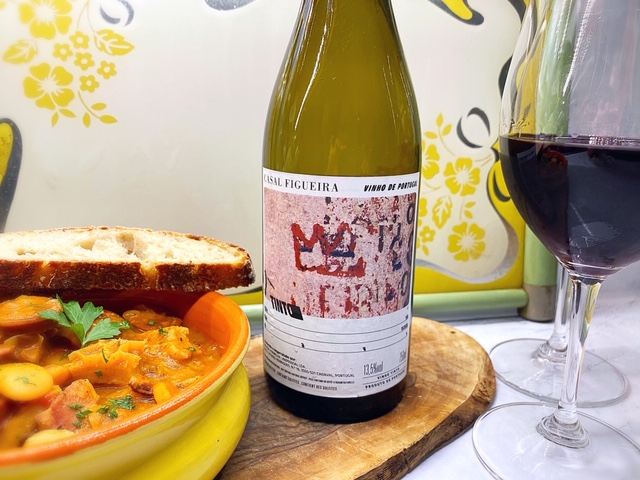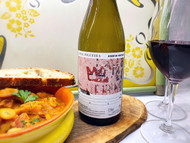Tragedy in the Vines
Posted by Stephan Lublin on September 27 2020 2:29pm
It reads like a tragic romance novel or a tear-jerker movie we’ve all seen, up there with Romeo and Juliet or The Notebook. Yeah, I’ve seen it. So what? Get your kleenex ready.
It begins with our hero, António, a young, handsome, passionate viticulturist. He studied in Montpellier, France, then returned to Portugal to make wine. His hard work in the vineyard and dedication to the vine lead him to the rediscovery of the varietal, Vital, or Malvasia Corada, bringing it back from near extinction in Portugal. He works tirelessly, nonstop, for making wine is an extension of himself, and all the love in his soul is poured into his craft.
Enter our heroine, young, beautiful artist, Marta. She’s in search of a place away from Lisbon's noise and distractions to create her masterpieces and happens upon a small studio for rent above a wine cellar north of the city. She leases the tiny space and from dawn until dusk Marta watches the young man from afar, as he slaves away with such devotion to winemaking. The two meet, court, fall in love, and marry, and Marta becomes part of Casal Figueira, António’s winery and labor of love.
Time passes, the two have children and continue to pursue their passions together. Then, all of the sudden, tragically, at only 43 years of age, António passes away during the harvest, leaving his wife and two young children behind. Marta, with no choice and her family relying on her, continues on, finishing the harvest and fermenting the juice into wine. She has no training, but with the help of neighboring winemakers she begins to learn the craft.
In the vineyard she feels the spirit of her late husband and chooses to channel his energy, hearing his whispers in the wind passing through the vineyard. She knows she must do as he would, caring for each vine and tending to them with the utmost care, using biodynamic methods and a hands off approach. In honor of her late husband, she renames their 100% Vital cuvee to “António,” an ode to the man she loved and the grape he saved from extinction. Now 10 years since his passing, she continues to make wines that express the varietal, region, and love for her husband and winemaking. (Wipes tears)
Not only a beautiful story, but beautiful wines. The 2017 Casal Figueira Tinto is 100% Castelão from vines averaging 50 years of age. In the glass it shows a medium ruby robe. Initially, wild, animal notes, red cherry, matchstick, and leather jump from the glass, and as the wine opens up over time, it softens to show wild strawberry, ripe cherry, and a hint of cola, balancing a velvety texture and medium plus body. Quite lovely.
Such a robust, expressive wine needs food to match, and Tripas a Moda do Porto, Porto-style tripe and bean stew, is just that dish. This recipe could not be more Portuguese. As legend has it, it dates back to the 15th century, when Infante Dom Henrique set sail from Porto with a fleet of ships to conquer the settlement of Ceuta in Northern Africa. The people of Porto, to aid the effort, slaughtered livestock and offered the meat to the sailors, leaving only the tripe for themselves to make a stew. The dish has evolved over time, but remains the emblematic dish of Porto and a national Portuguese recipe. Along with tripe, beans, onions, carrots, spices, chorizo, and often other meats are stewed together until tender and delicious. Together, with Casal Figueira’s Castelão, both the history of a country and tragedy of two lovers come together to culminate into one beautiful and storied Portuguese meal.


